News
Rolex GMT-Master, A brief history
The watch had two innovations that were big news at the time, but aspects we take for granted in the modern era. The first and less obvious was the date magnifying bubble, or to use Rolex terminology the cyclops. This was a new feature introduced the year before (1953) on the Datejust line. The second was, of course, the dual time zone complication.
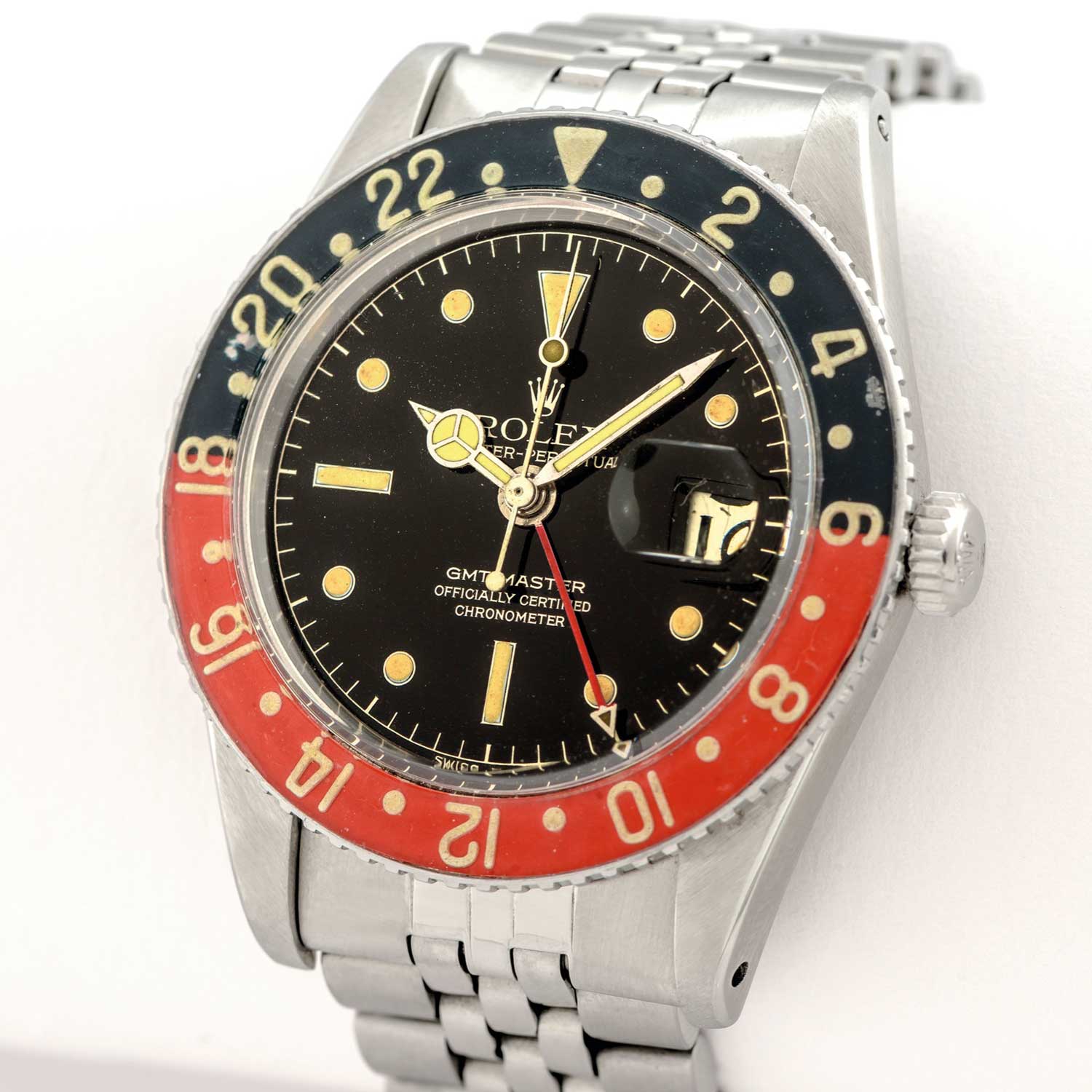
Rolex introduced the GMT-Master reference 6542 in 1954
Rolex GMT was made for Pan Am pilot
The dual time zone was a useful tool for pilots and those who were travelling a lot across different continents. The ability to track local and home time was especially useful for commercial pilots. The American airline company, Pan American Airlines (or Pan Am for short) approached Rolex and asked them to develop a watch for their pilots. This partnership led to the development of the GMT-Master and in particular the first reference 6542. The commercially released watches housed a base caliber 1030 which was modified to include the 24 hour hand and was given the caliber number 1065. This chronometer rated movement was a four-hand calibre with date function. The 24 hour hand completed one full rotation every 24 hours and the bi-directional bezel could be rotated to allow the wearer to monitor the home time once they had adjusted their watch to local time or vice versa.
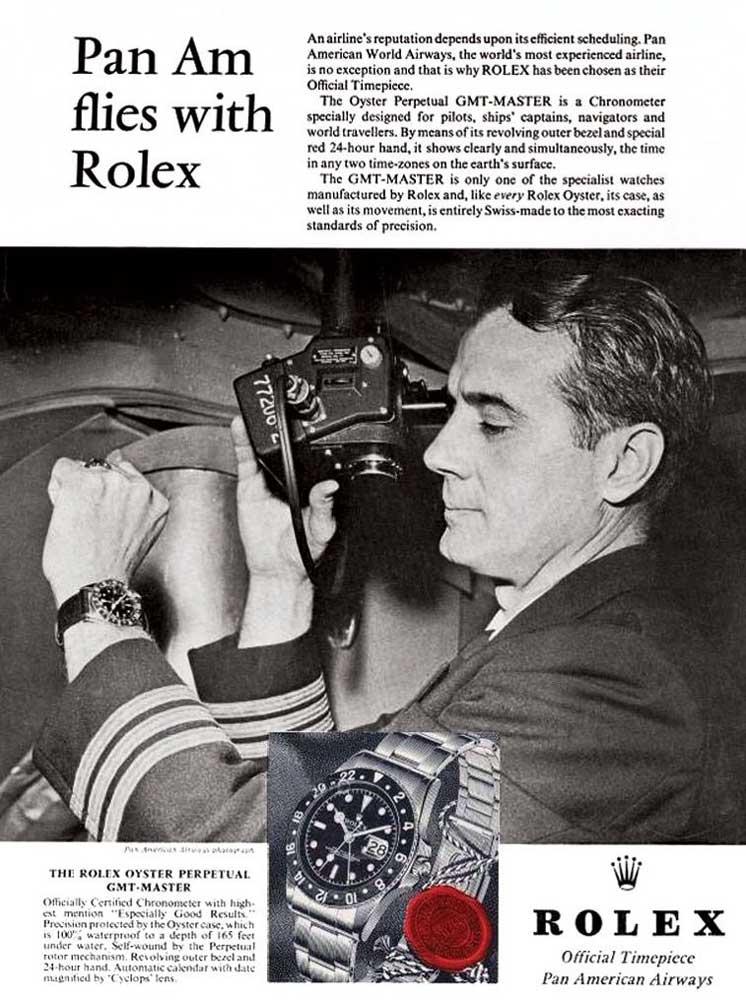
Rebranded Rolex Pepsi by watches collector
The iconic red and blue bezel made its debut on the 6542. Known to collectors as the ‘Pepsi’ bezel, due to its colour scheme being reminiscent of the well known cola brand, the blue half presents night hours (18:00 to 06:00) and the red half, day hours (06:00 to 18:00).
Rolex GMT master from 1960 to 1980
Rolex GMT in the 1960s
In 1959 Rolex launched their second series of the GMT-Master, a reference that would run until approximately 1980, the reference 1675. This new reference featured the new 1530 series movement, in the case of the GMT-Master caliber 1565. The most striking feature of the updated watch was the presence of crown guards. The case had been enlarged by 2mm and was now 40mm (excluding the crown guards) and was again available in both stainless steel (1675/0) and 18ct yellow gold (1675/8).

Rolex GMT-Master in 1970s
There were two striking additions to the GMT-Master family in the early 1970s. The first was the introduction of a two-tone GMT-Master in steel and yellow gold (reference 1675/3). This watch was available in two versions – a brown dial with half brown, half gold bezel insert and also with a black dial and all-black insert. Both watches were available on two-tone bracelets either Jubilee or Oyster.
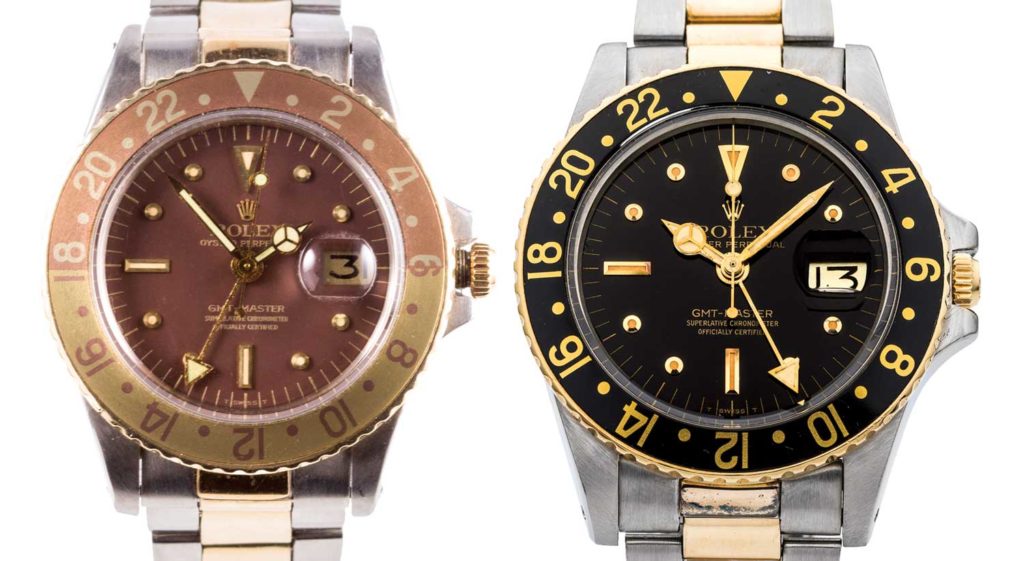
Renamed Rolex GMT-Master II in the early eighties
The end of the 1970s and into the 1980s heralded an era now referred to as the ‘transitional’ period for Rolex. The brand began to introduce sapphire crystals, the quick set date function and a move back to glossy dials but with luminous filled white gold applied hour markers. The GMT-Master reference 16750 was introduced in 1979 and had a quick set date function. The matte dials were eventually phased over to the white gold surround hour markers dials.
In 1983 the GMT-Master was renamed the GMT-Master II with the new reference 16760. The watch now had, as standard, a sapphire crystal, quick set date and glossy dial with white gold surround hour markers. The big innovation and the reason for the addition of the “II” in the name was a new independently setting 24hr hand (a quick-set feature). This was a big development in the line and made the watch a lot more versatile and able to monitor three time zones. The watch was housed in a much thicker case, to facilitate the thicker movement. Collectors have given this watch the nickname ‘Fat Lady’. An additional note of interest to collectors is that this watch has an early dial variation, where the word ‘DATE’ is omitted from the upper dial text. Small, but important details…that’s why we love vintage Rolex!
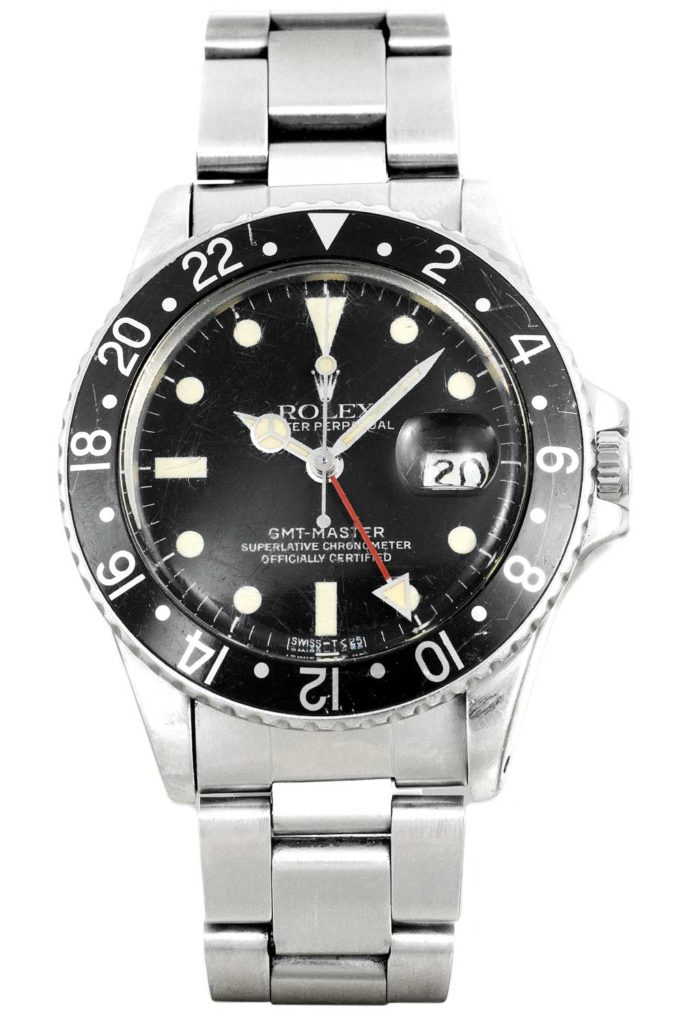
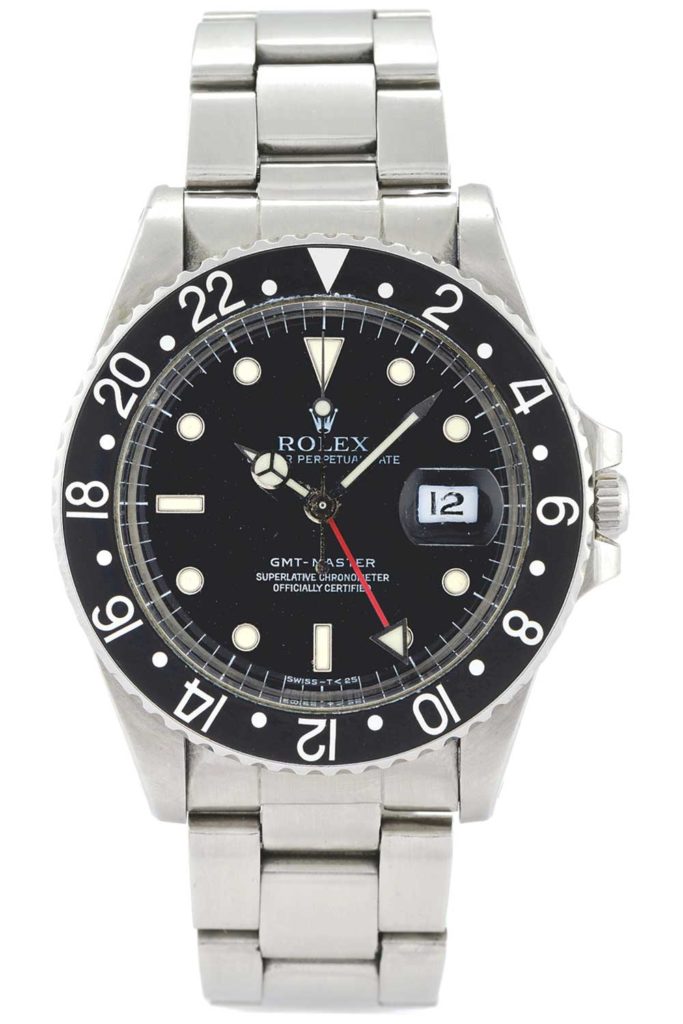
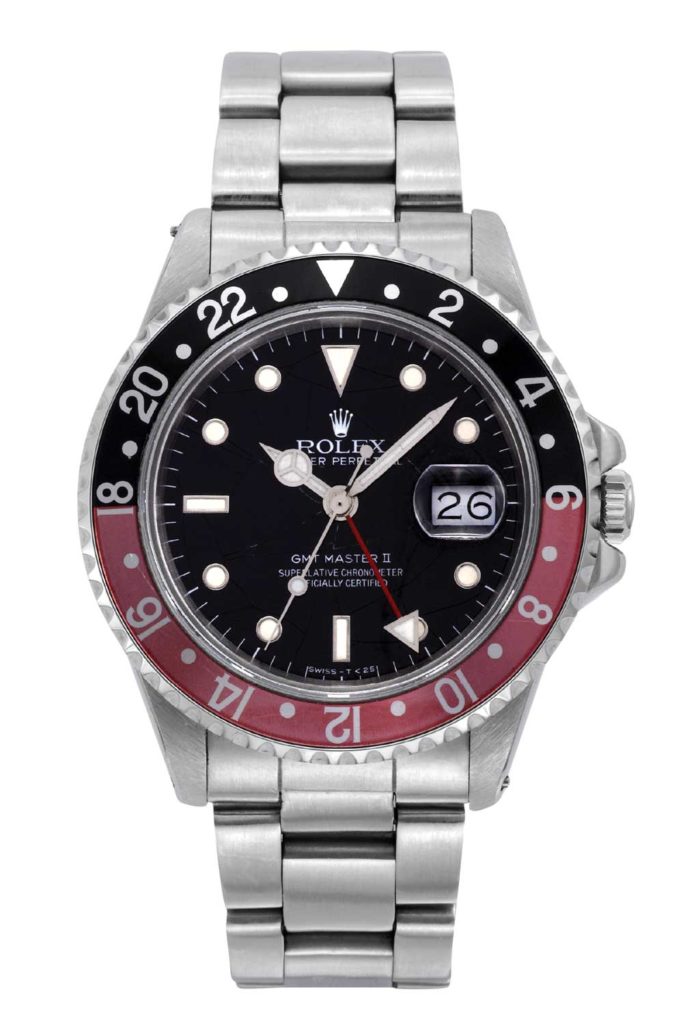
Into the 90s
In 1989 Rolex updated the GMT-Master II line with the reference 16710. This watch featured the new caliber 3185 (based on the base caliber 3135), which was very similar to the previous caliber. The most noticeable difference with the updated model was the slimmer case. This change in profile of the watch was welcomed by buyers, who had felt that the thickness of the ‘Fat Lady’s’ case was too much. The watch was a huge success and remained in the brand’s line up for 18 years until 2007.
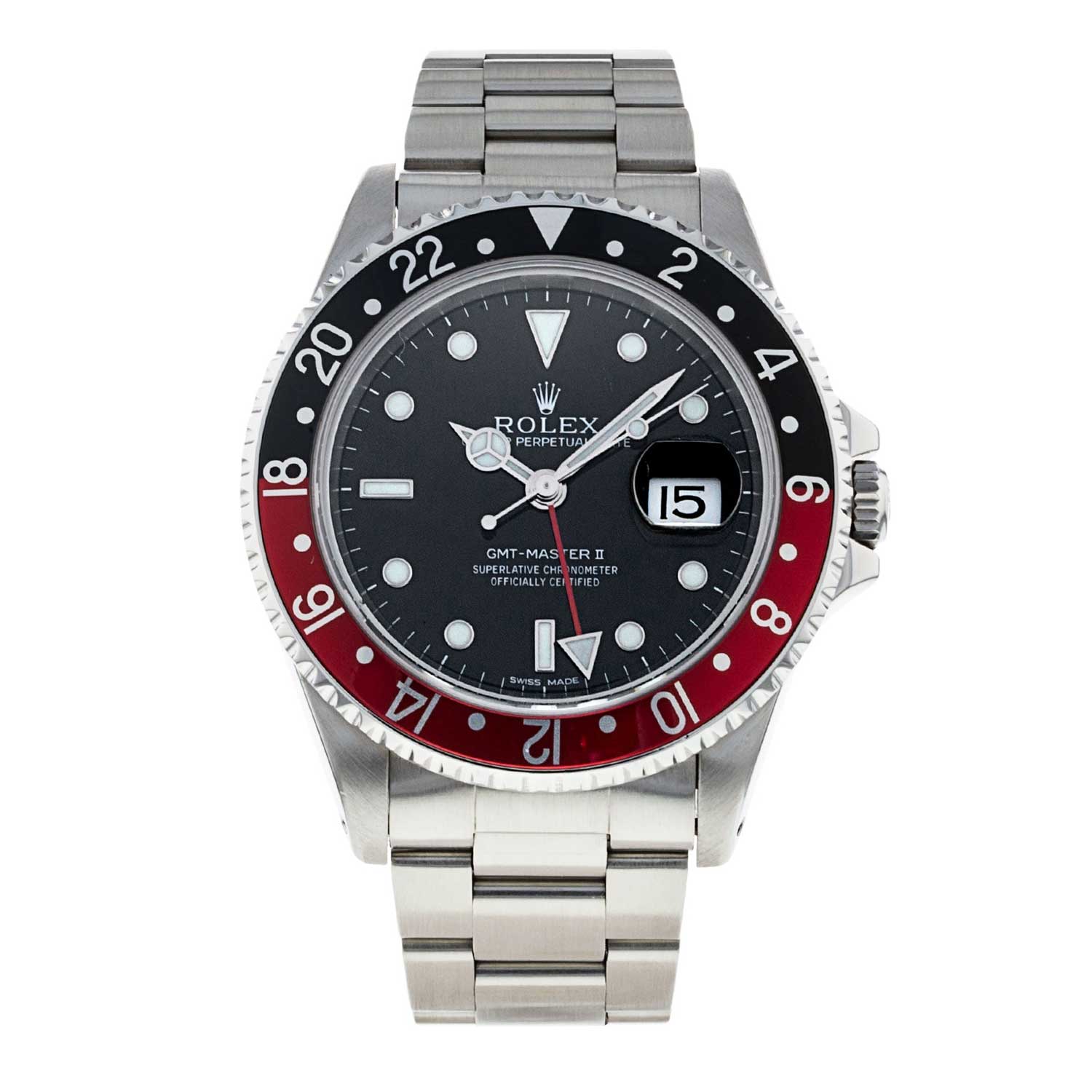
Rolex updated the GMT-Master II line with the reference 16710 in 1989
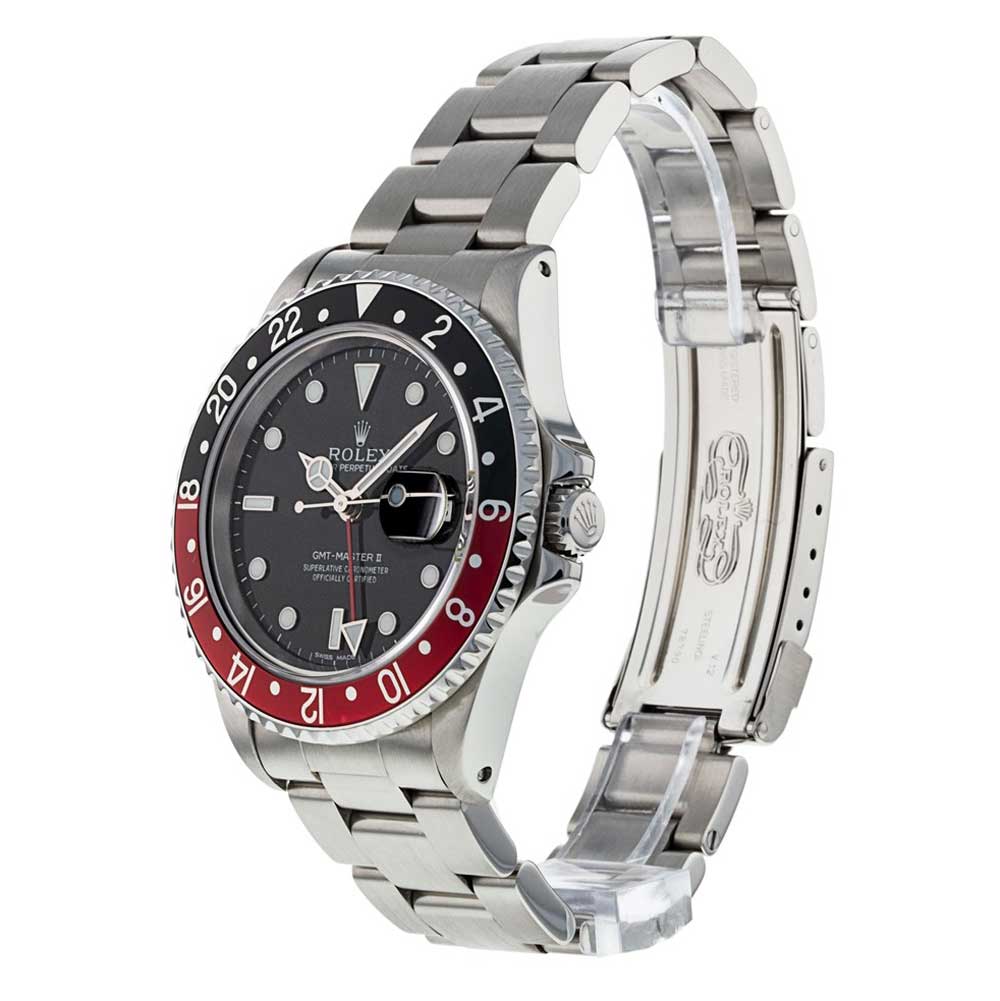
Rolex updated the GMT-Master II line with the reference 16710 in 1989
2000s
The third generation of the GMT-Master was unveiled in 2005. The 18ct gold GMT-Master II reference 116718 was a considerable departure from its predecessors with a remodeled case profile, with much heavier lugs and crown guards. The aluminium bezel inserts of the past 50 years were gone and in its place was a new all black ceramic insert with gold numbers. The watch was available in either black dial or green dial. A new green 24-hour hand on the black dial version complimented the “GMT MASTER II” text that was also green. On the green dial the text was all in gold and was complimented by a gold 24-hour hand.
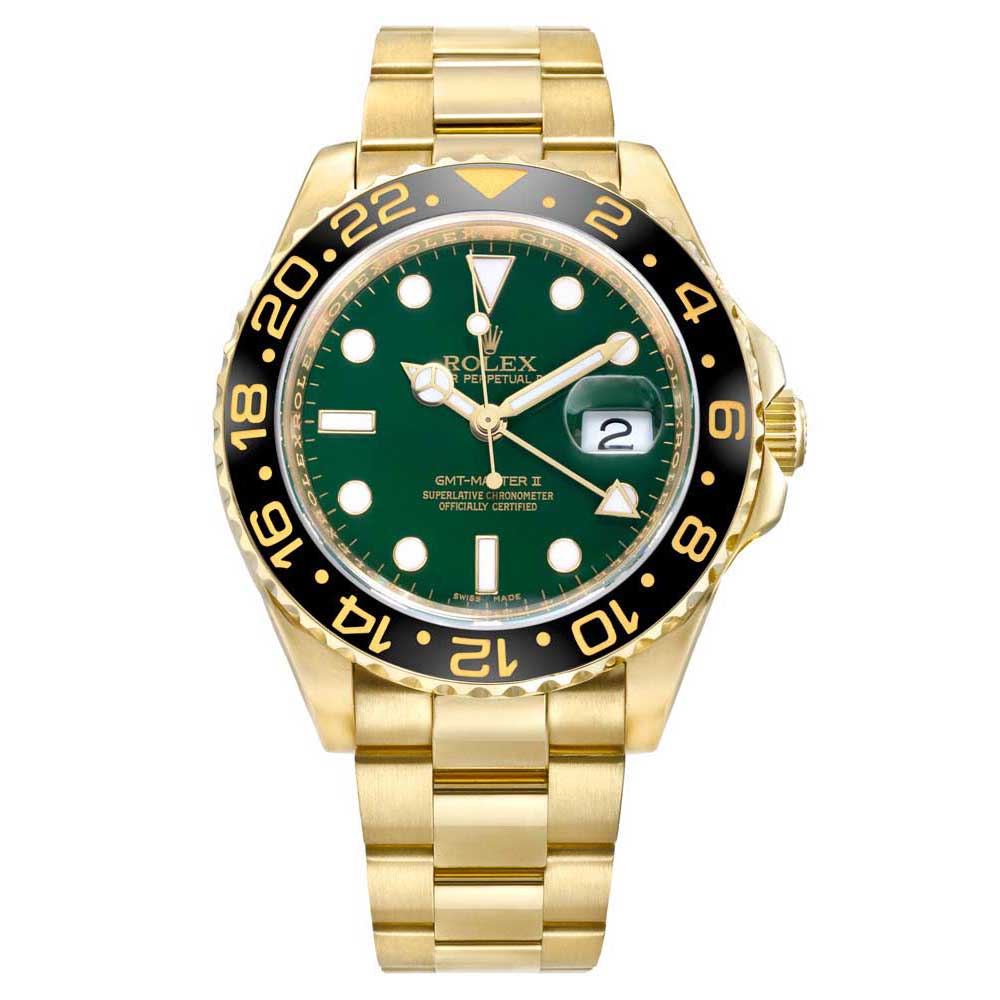
The 18k gold GMT-Master II reference 116718 introduced in 2005
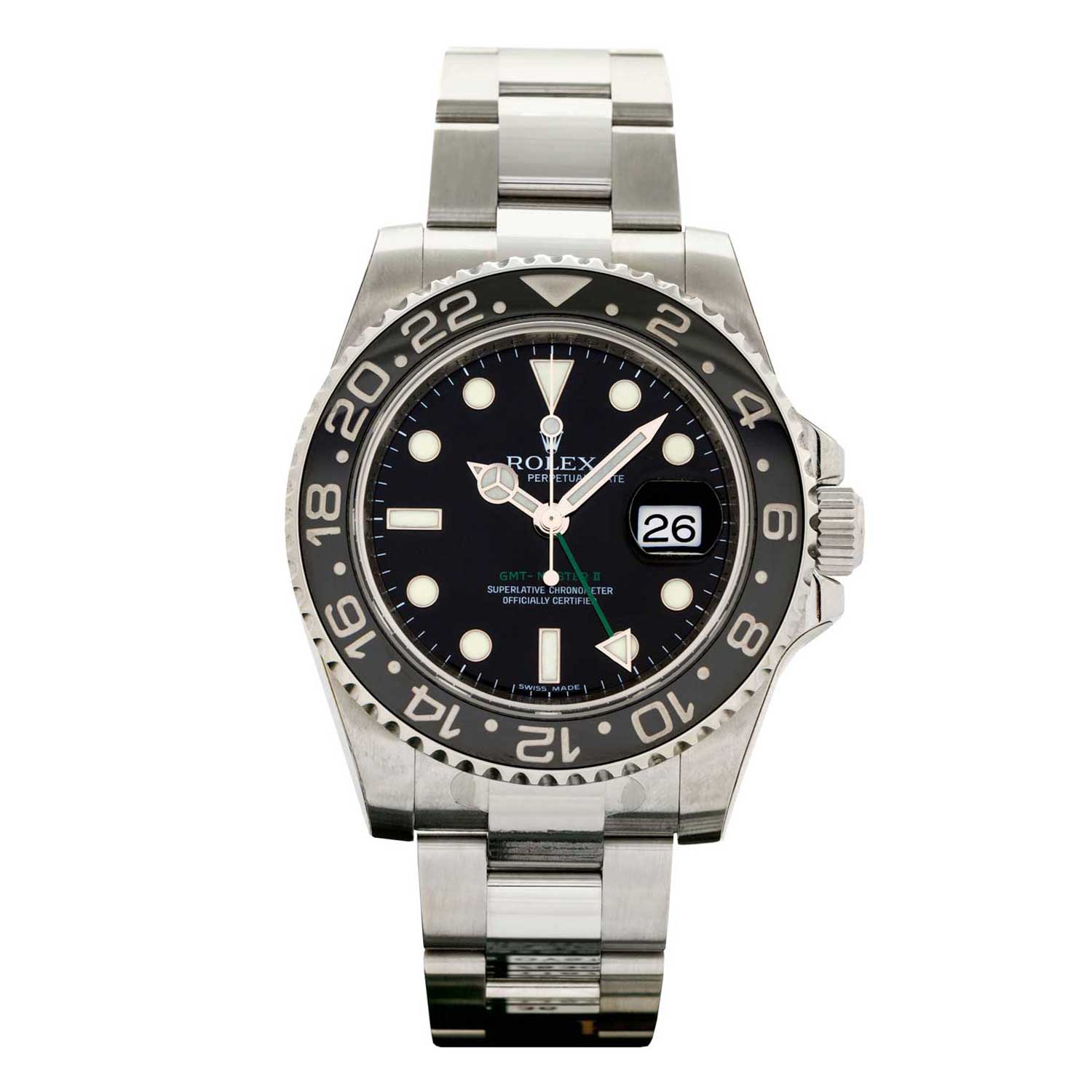
Ref. 116710 (Image: Antiquorum)
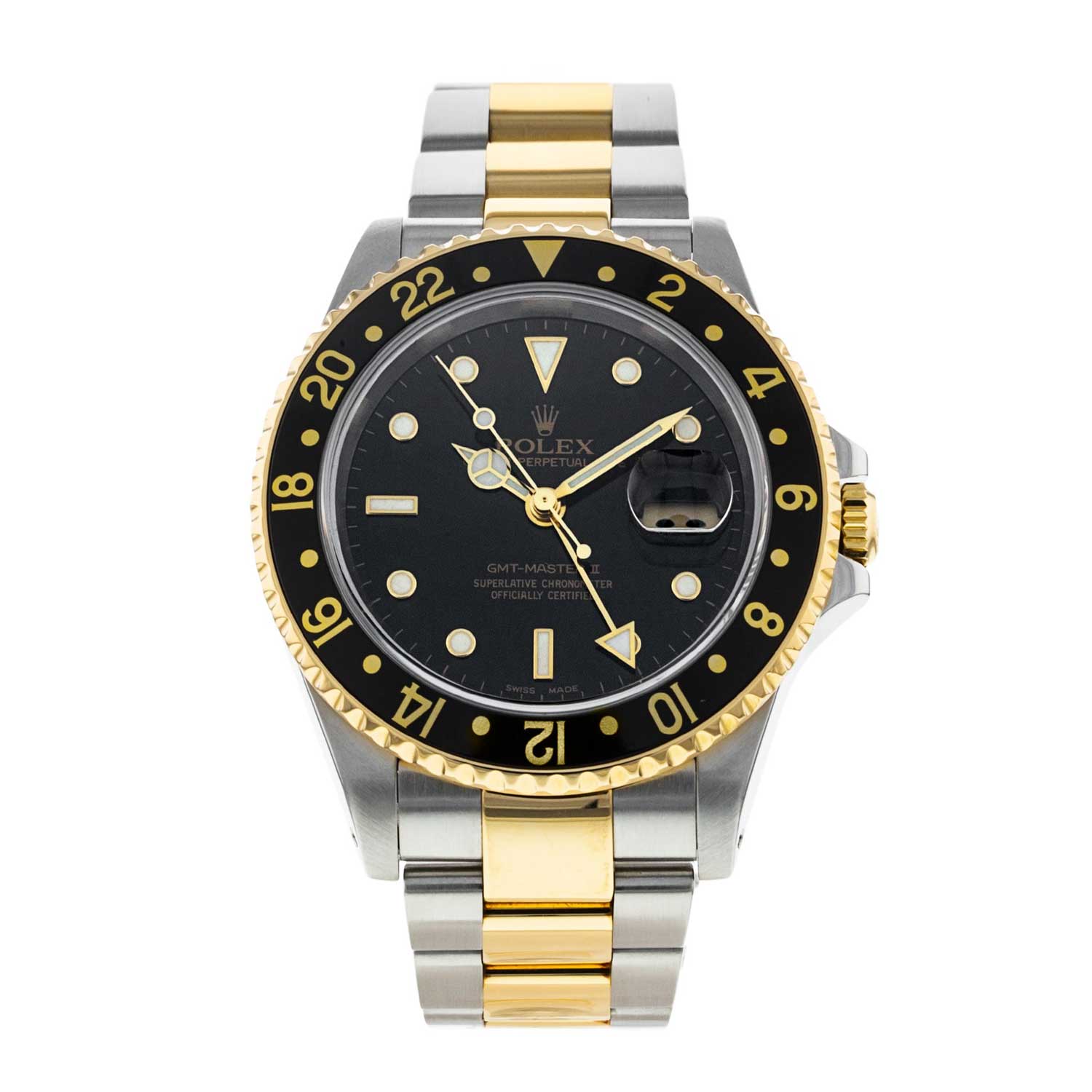
Rolex GMT-Master II reference 16713
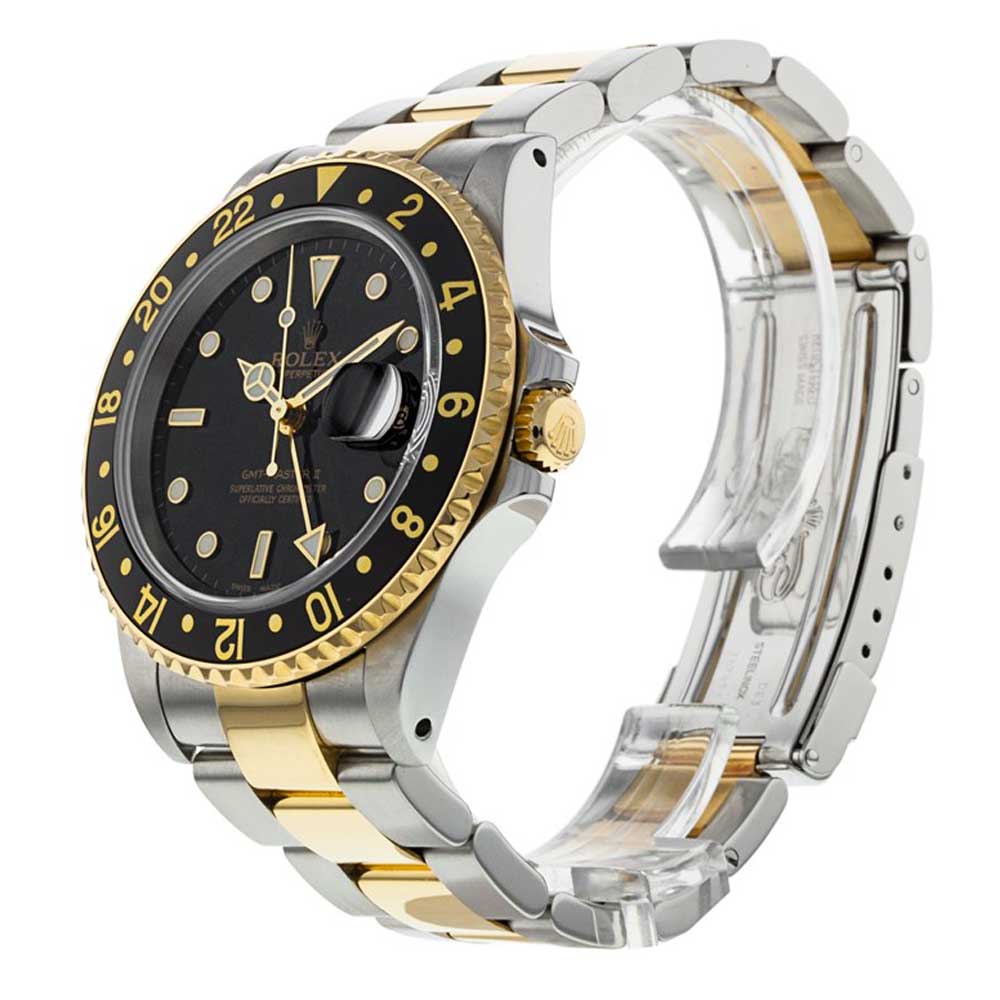
2010s, Rolex batman as a new nickname
At Baselworld 2012 Rolex unveiled the steel 116710 BLNR with black and blue Cerachrom insert, where the black half represented night hours and the blue daylight. Finally, the brand had found a way to create a two-colour bezel. The black and blue worked well together and Rolex were proud of the achievement of mixing the colours, which was a significant technological feat that no other brand had managed to do. The watch was given a couple of nicknames by the collector community – The Batman was the most popular.
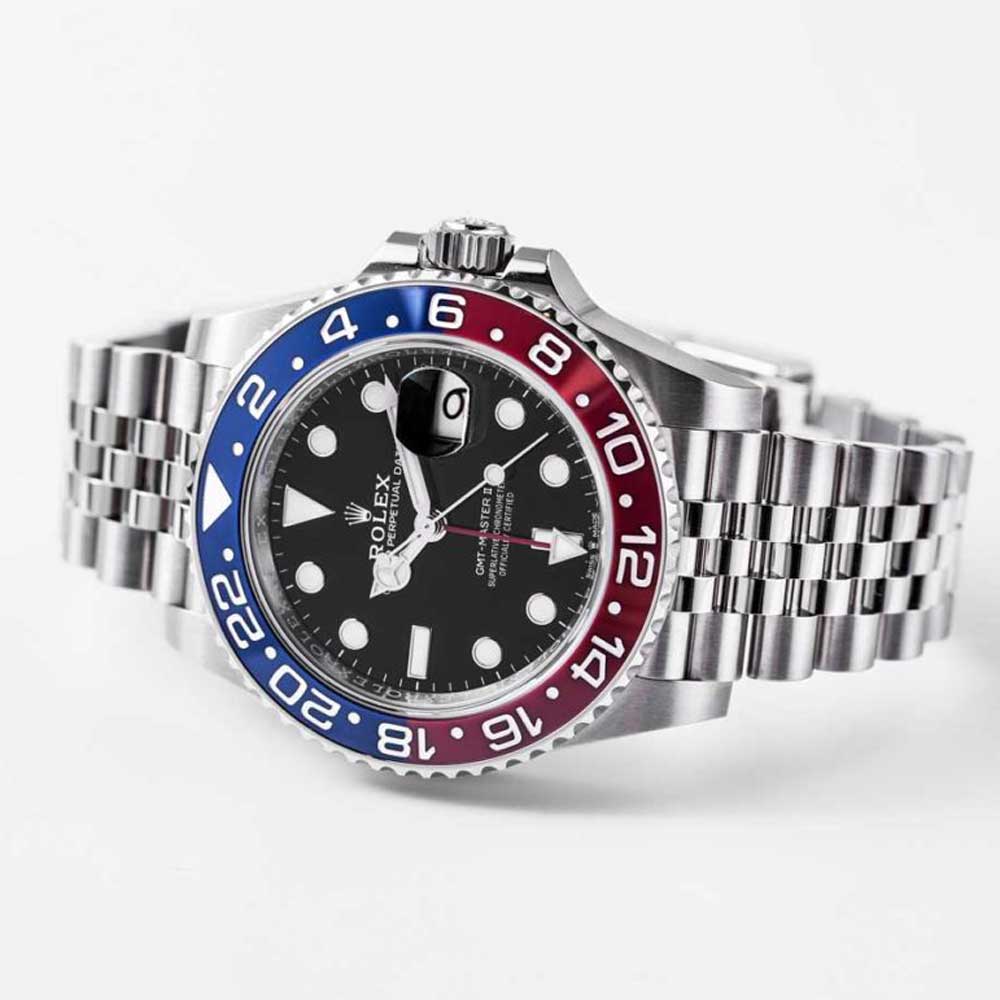
Ref. 126710BLRO GMT-Master II in steel with Pepsi bezel (© Revolution)
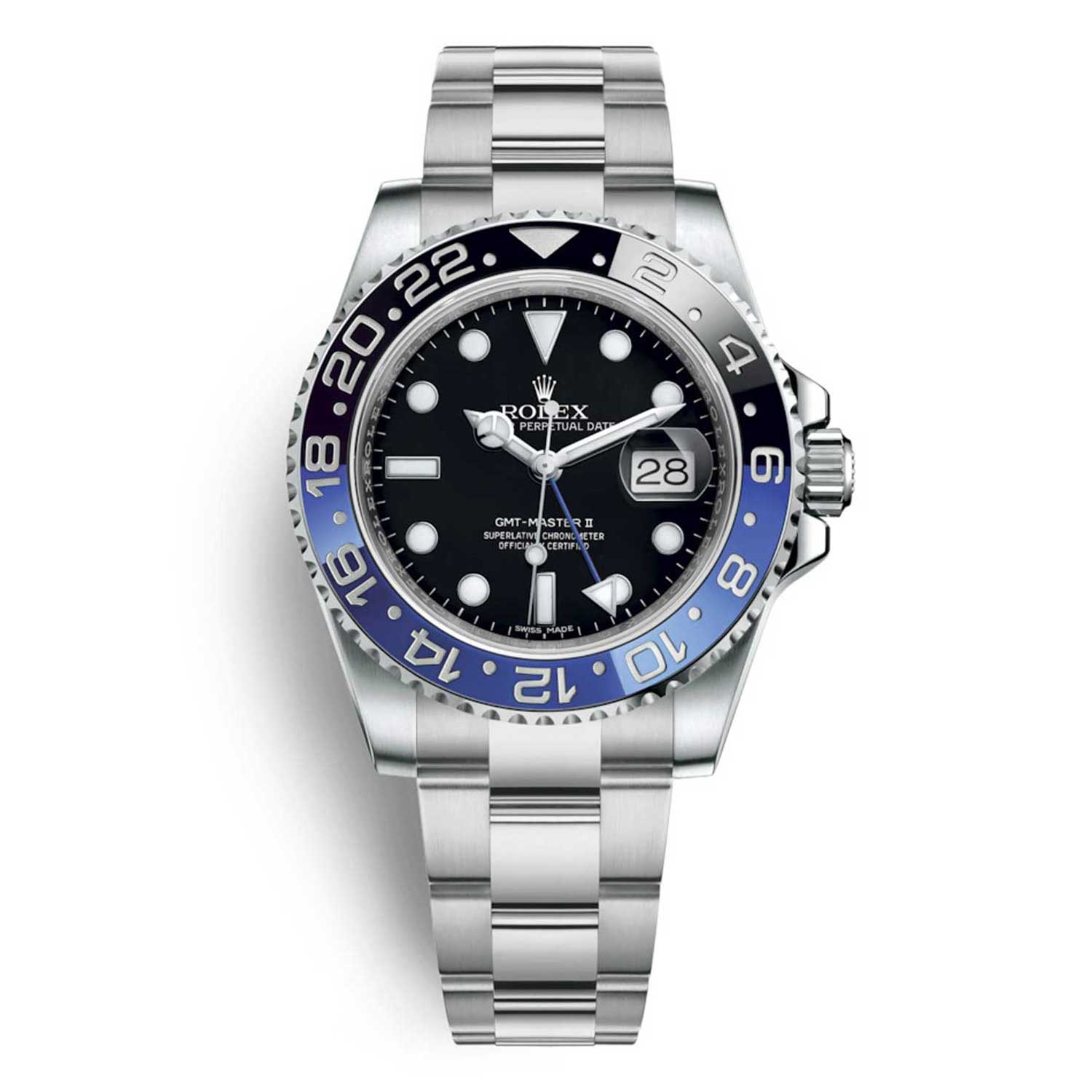
GMT-Master II “Batman” Reference 116710BLNR










